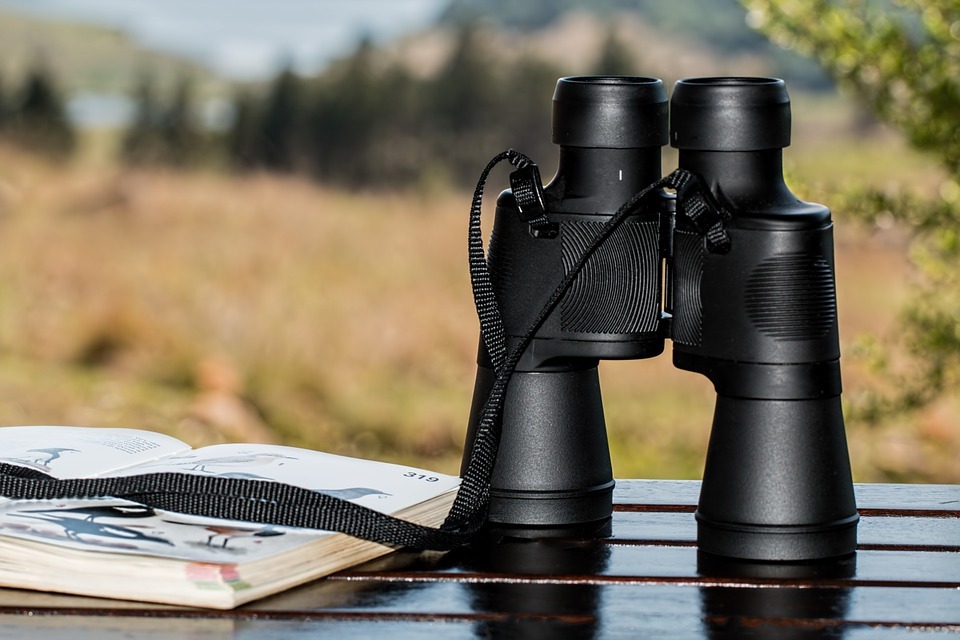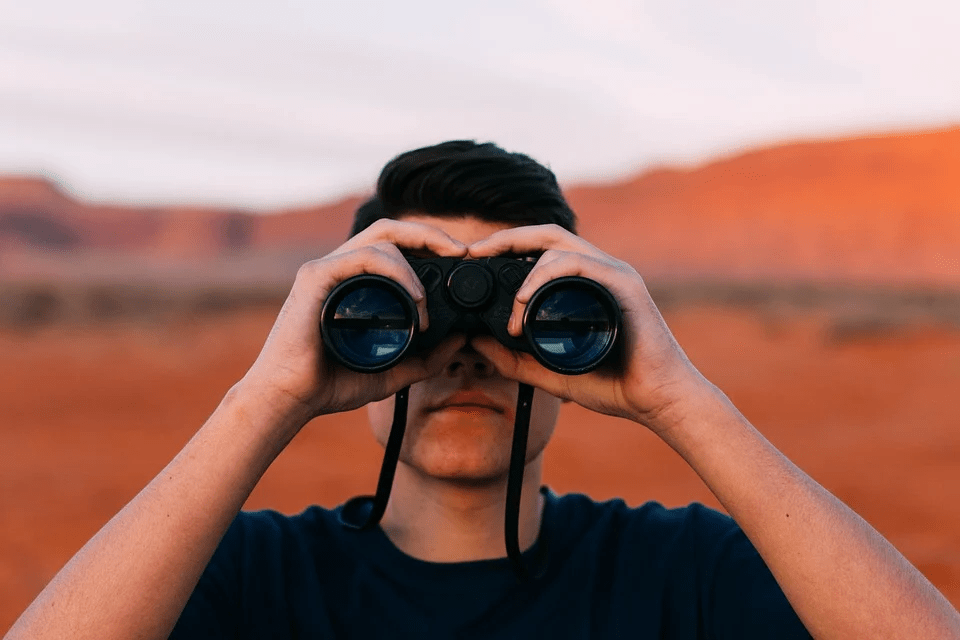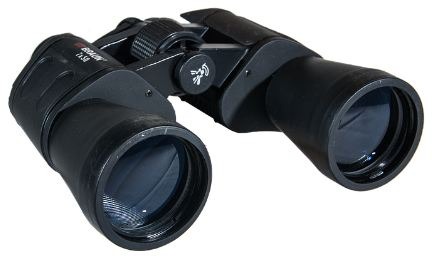Before we list all its parts, first, let’s define binoculars. Binoculars are a pair of telescopes put side-by-side which are aligned to point in the same direction. This allows the viewer to use both eyes while looking through them.
Binoculars are used to see distant objects like stars and constellations in the galaxy and other celestial objects like a nebula. You can also use them for military applications or nature-related hobbies such as bird watching or hunting. Astronomers and hikers, among others, also use binoculars.
Evolution of Binoculars
Over the years, binoculars have evolved from the Galilean glasses to the more modern binoculars we see today. Not much has changed in their fundamental structure except some improvements and add-ons like stabilization techniques, lens and prism coatings, and gas purging in the binocular’s interior.
How Do Binoculars Work
Binoculars employ a series of lenses to magnify a picture seen through them (ocular and objective lens). By redirecting the light path, prisms reverse the lenses’ inverted images and shorten the length of the binoculars.
Binoculars require three optical components to function correctly:
- Ocular or Eyepiece: to focus on and magnify the projected virtual image
- Prisms: to adjust image alignment – vertically and horizontally flip the image
- Objective lens: picks up incident light and focuses it on the focal point, typically a lens system of two or more lenses to accommodate aberration
Below are the elaborate explanations of the roles each part plays for the binoculars to properly function.
Different Parts of Binoculars and Their Functions
Objective Lenses
These lenses are found directly opposite the eyepiece lenses. When viewing, objective lenses are the furthest from the viewer’s eyes and are nearest to the object you are seeing. They are much bigger than the eyepiece lenses, and their primary function is to establish the amount of light the binoculars have gathered from the target by the size of its diameter. A larger lens diameter means a larger aperture which also means more light to catch. The viewer can see the object once these lenses direct the available light they captured to the eyepiece.
These objective pieces are made of glass, and many manufacturers use special coatings on them to amplify light transmission. They also feature an anti-reflective coating to maximize catching the light rays to get maximum contrast and a clear view of the object.
It’s essential to ensure that the objective lenses don’t get damaged as binoculars are rendered useless without them since these lenses provide the central insight of your object.
Prisms (Porro & Roof Prism Type)
When using binoculars, the object appears magnified, but the lenses flip the distant objects upside down. As the objective lens gathers the light, generates an image, and focuses it on the eyepiece, it becomes inverted. Prisms are placed right between the objective lens and the eyepiece to correct the inverted image’s orientation.
These prisms are usually in a pair. The first prism flips the object by 90 degrees and the second prism flips it again by 90 degrees, making a total of 180 degrees. This corrects the upside-down image created by the lenses.
Prisms come in two arrangements. The two most common types are the Roof Prism and Porro Prism arrangement. Binoculars are also often classified according to these two arrangements.
Prisms are also responsible for the size of the binoculars. They fold the light path, which helps not make the binoculars very long and bulky and easier to handle by hand.
Eyepiece Lenses/Ocular Lenses
The eyepiece or the ocular lenses are closest to the viewer’s eyes when looking through the binoculars. These are the lenses you look directly into. They are much smaller than the objective lens and while the objective lens collects the light and creates the image, the eyepiece, positioned near the focal point of the objective lens, magnifies the image.
The amount of magnification created by the eyepiece depends on its focal length. The several lenses in the eyepiece are cased in a housing. The image or subject can be focused by moving the eyepiece nearer or further from the objective lens. There is a focusing wheel in most binoculars so that users can move the shaft in which the eyepiece is mounted without directly manipulating the eyepiece.
The eyepiece of the binoculars is usually permanently fixed and has predetermined magnification and a fixed field of view. Although, they can also be interchanged to be reduced or increase the magnification and alter the field of view.
Barrel-Bridge With Hinge
Binoculars consist of two telescopes set side by side. To allow an onlooker to look through them simultaneously, they must all point in the same direction. The binoculars’ barrels are held in parallel alignment by the barrel-bridge, ensuring that the optical axis is level (the light beam is collimated).
The eyepieces can be adjusted to the viewer’s specific eye distance using hinges that connect the bridge.
Chassis/Casing/Binoculars Barrel
The chassis is the housing or the casing that holds the parts of the binoculars together in one unit. The longevity and weight of the binoculars depend on the type of material used for the body.
Some chassis are lightweight and durable, and others have more strength. Although usually, the housing is covered with Gutta Percha to increase longevity and sometimes coated with a protective rubber coating.
Diopter Knob
The diopter knob is used to adjust to the difference between your two eyes. Sometimes, looking through binoculars can easily strain your eyes if you have a difference in the optical system for both eyes.
It’s usually located near one of the eyepieces and is often marked with +/-.
Focus Wheel
The purpose of the focus wheel is to get a sharp and clear view of the object, which is at different distances from you. The focus wheel slightly moves the interior lenses of the eyepiece to bring the image into focus.
It is often located near the eyepiece, either between the lenses or on one of the eyepieces.
It’s termed center focus binoculars when the focus wheel is in the middle and left or right focus binoculars when it’s on the side. It’s conducive for people who wear glasses because it allows them to adjust the binoculars for better images.
Binoculars that are also known as self-focusing binoculars, are available on the market. However, they are not often suggested for eyeglass users since they rely on the viewer’s eye to bring the picture into focus.




